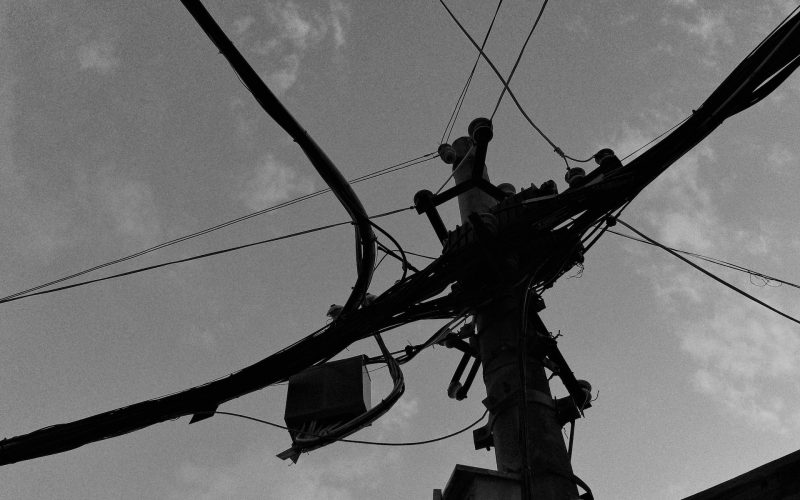As demand for energy grows around the world, so too does the technology used to produce and distribute it. Whether it’s solar power gathered from photovoltaic panels or electricity transferred through utility poles, more and more people are turning to these technologies for their needs – thanks in large part to advancements in innovation, regulatory changes, and infrastructure development.
Today we’re going to take a closer look at the growing global utility pole industry and the challenges as well as growth factors involved with it in order to understand how this industry looks now – and its future potential down the road. By examining everything from emerging markets to new forms of renewable energies, interesting trends begin to unfold as choices become clearer when planning an efficient workflow system that best fits companies’ needs.
Utility Poles Industry
The utility pole industry plays a vital role in the distribution of electricity and telecommunications services. The industry is responsible for producing and installing millions of poles across the globe.
The poles can be made from various materials, including wood, steel, and concrete. Due to their importance in keeping communities connected, utility poles are subject to strict regulations and safety standards.
The industry has also been impacted by technological advancements, including the integration of smart grids and the increased demand for wireless services. You can click here if you want to inform yourself better or do some research yourself online. Despite the changes, the utility pole industry remains a crucial component of modern infrastructure.
Key Challenges in the Utility Poles Industry
The utility poles industry faces several key challenges that pose significant hurdles to stakeholders. One of the major challenges is maintaining the aging infrastructure of utility poles, as many of these structures were installed decades ago and are in need of repair or replacement.
Another challenge is the increasing pressure from regulatory bodies and environmental groups to adopt more sustainable and eco-friendly practices, which can often be costly and time-consuming.
Moreover, the industry must also contend with factors like labor shortages, supply chain disruptions, and changing consumer preferences for alternative energy sources. All of these issues require careful management and innovative solutions, as the utility poles industry seeks to adapt and thrive in the face of an ever-evolving landscape.
Cost constraint
Let’s face it – cost is a major factor in almost everything we do, and business decisions are no exception. In the utility poles industry, cost constraints can be significant and can impede growth if not managed appropriately. Factors like labor costs, raw material prices, and overhead expenses all add up to create a tight budget for any given project.
Therefore, it is essential that companies in this industry have an effective strategy for managing their resources in order to maximize efficiency and profitability. This could include strategies such as investing in automation, exploring alternative suppliers, and negotiating better deals with vendors.
Environmental considerations
The utility poles industry is subject to a number of environmental considerations due to its role in providing essential energy resources. Companies must be mindful of the impact their operations have on the environment, from sourcing materials sustainably to reducing emissions and waste.
Moreover, they must also take into account potential hazards related to their structures, such as pole fires or broken lines that can cause power outages and other safety issues. By taking the proper steps to minimize environmental impact and ensure compliance with regulations, companies can help safeguard both the environment and their bottom line.
Growth Factors of the Utility Poles Industry
The utility pole industry has been experiencing significant growth in recent years due to various factors. The increasing population in urban areas has created a higher demand for electricity and other utilities, resulting in a greater need for utility poles.
This demand has been further fueled by the growth of technology, as more and more people rely on internet and telecommunications services, which require additional infrastructure.
Moreover, the continued development of renewable energy sources has also contributed to the growth of the utility pole industry, as new infrastructure is needed to accommodate these technologies. Overall, the utility pole industry is expected to continue its growth trajectory in the coming years as these factors persist.
Technological advancement
Technology is one of the most important drivers of growth in the utility pole industry. As more and more people become dependent on wireless services, companies are investing in new technologies to ensure seamless functioning.
This includes things like smart grids, automation, and data analytics, which can all help increase efficiency and reduce costs. Additionally, technological advancements have led to new opportunities in the industry, such as the development of energy storage solutions and more efficient designs.
Infrastructure Development
In order for the utility pole industry to grow and keep up with changing consumer demands, it is essential that companies have access to reliable infrastructure. Many countries are investing heavily in new infrastructure projects to ensure that they can meet their needs for electricity and other utilities.
These projects can range from the construction of new power plants to the installation of thousands of miles of utility poles. By investing in infrastructure, governments can help ensure that their citizens have access to reliable energy resources. This in turn helps create an environment where businesses can thrive and contribute to overall economic growth.
Smart City Initiatives
The growth of smart cities has also had a significant impact on the utility pole industry. Smart cities use technology to increase efficiency and reduce costs in areas like energy consumption, transportation, and waste management.
In order to achieve these goals, it is essential that these cities have reliable utility poles and other infrastructure in place. Companies in the utility pole industry can therefore capitalize on this trend by providing smart city solutions that are tailored to meet the specific needs of these cities.

Overall, the utility poles industry is a vital part of modern infrastructure and will continue to play an important role in the years to come. With technological advancements, cost-saving strategies, and reliable infrastructure in place, the industry can look forward to continued growth and success. As technology advances and new regulations take effect, companies must remain agile and adaptive in order to stay competitive. By taking these steps, businesses can ensure their continued success in the utility poles industry.








